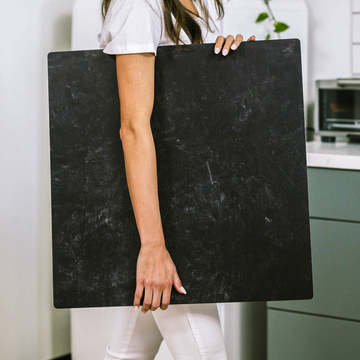What’s the first thing most photographers-or small business owners-think about when it comes to food photography backdrops? Color, pattern, maybe the trending faux-marble look. But here’s a little-known truth: the science behind your backdrop matters just as much as its style. If you really want to make your food pop off the screen and save yourself hours of editing, it’s time to look past the surface and discover what’s happening behind-the-scenes-at a microscopic level.
Whether you’re a home baker building your brand or a seasoned product photographer, the difference between “nice” and “wow” often comes down to the surface you shoot on. Let’s explore why professionally engineered backdrops are about more than just aesthetics-and how a smart choice can set your work apart.
Micro-Texture: More Than Meets the Eye
Have you ever noticed that some food photos seem to glow, with subtle shadows and highlights that create irresistible depth? This isn’t just about lighting-it’s about micro-texture. Tiny bumps, grains, and stipples on a backdrop’s surface scatter light in countless directions. The result?
- Softer, more lifelike shadows. Gentle texture helps spread the light, flattering glossy glazes and juicy cuts.
- Deeper, more realistic highlights. Especially on foods like fruit and jellies, these micro-topographies help shape a beautiful, edible “pop.”
If you want a subtle, professional glow (imagine the rim of a sliced orange, backlit with warmth), experiment with textured surfaces and low-angle fill. You’ll discover new dimensions in your food-no extra gear required.
Why Color Fidelity Changes Everything
If you’ve ever fought with color correction because your “white” background isn’t quite white under mixed lighting, you’re not alone. Most low-end boards or DIY backdrops reflect light unpredictably, creating stubborn blue or pink casts that haunt your editing sessions.
Engineered surfaces-like those used by pros-are made to be color-neutral. That means you get:
- Reliable, true-to-life colors straight from camera
- Less time spent correcting odd hues in post-production
- Consistent branding across social and e-commerce
It’s a simple switch that can make every step, from shooting to sharing, so much easier and more predictable.
Angles, Light, and Professional-Grade Reflection
Ever had a backdrop “flare” or show awkward hotspots from certain camera angles? This is a sign of poor surface engineering. The best photo backdrops manage something called Bidirectional Reflectance-in plain English, they control how light reflects at different angles.
With the right surface, you can:
- Keep highlights and shadows even, even with complicated food props or action shots (like drizzles and steam)
- Create creative light effects by tilting your light or surface just a smidge-sometimes making invisible elements, like steam, suddenly pop into view
Using Your Surface as a Secret Lighting Tool
The pros know a trick that’s rarely discussed: your backdrop isn’t just a “background.” It acts as a giant passive modifier, shaping how your main light bounces through your set. Here’s how choosing the right finish can transform your scene:
- Glossy marble: Jazzes up desserts with crisp highlights and snappy contrast
- Matte concrete: Wraps bread and rustic food in gentle, even light for an artisanal feel
- Pearlescent or subtly reflective: Creates a dreamy glow, perfect for pastries and confections
This type of setup lets you get remarkable results with just one good light and a few thoughtfully chosen surfaces-no need for endless props or expensive modifiers.
Durability and the Everyday Advantage
No one talks about this, but if you’re shooting at home, your backdrop needs to survive real messes. Spilled syrup, smeared icing, or lipstick-red berries can stain or dull ordinary boards forever. Invest in surfaces made for food photography: their color and texture stay consistent after endless wipes and washes. This means your “look” stays the same-crucial as your business or following grows.
Bringing It All Together: Think Like an Engineer, Create Like an Artist
To sum it up, surfaces aren’t just pretty backgrounds-they’re technical building blocks of your visual brand. Next time you choose a backdrop, ask yourself:
- What micro-texture will help my food glow?
- Is this surface truly color-neutral, or will it mess with my tones?
- How does it reflect light at different angles?
- Can it take real-world messes and keep looking great?
When you treat your backdrops as creative partners, not just props, your food images will thank you.
Have you tried a new kind of photography surface that changed your workflow or results? What engineering trick has leveled up your food photos? Share your experience below-we’d love to see how you’re moving beyond the obvious, one backdrop at a time!



